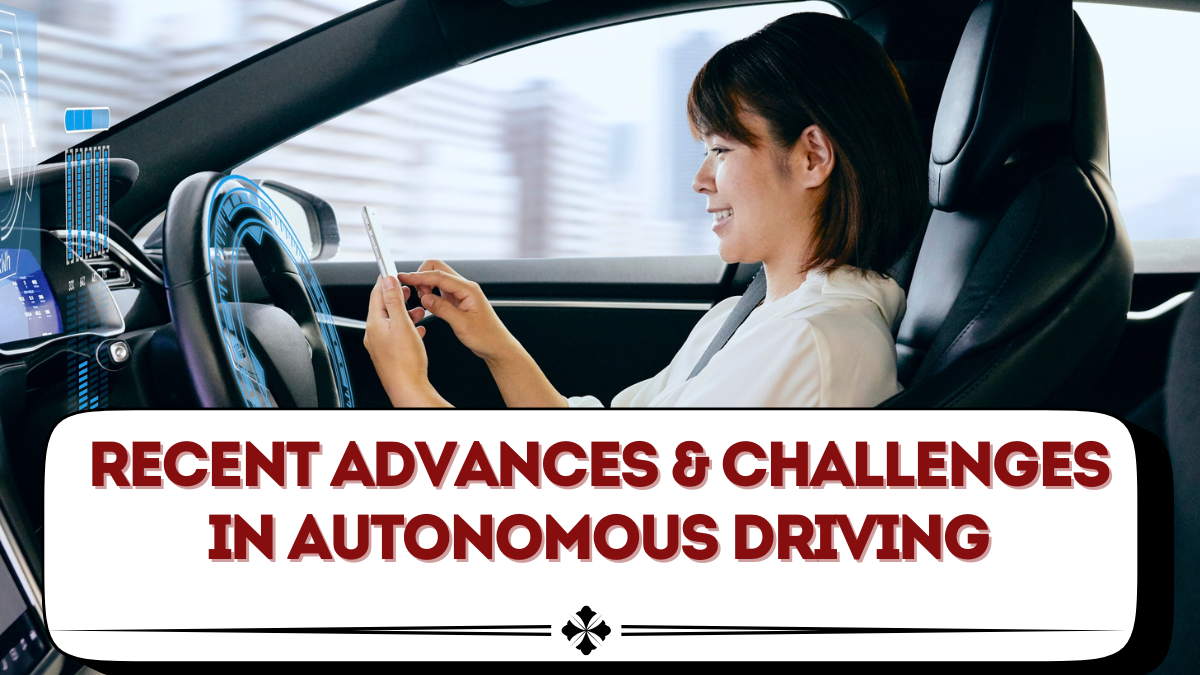The dream of self-driving cars has long fascinated both automakers and consumers. In 2025, the industry is closer than ever to making it a widespread reality. The latest autonomous driving updates highlight progress in Advanced Driver Assistance Systems (ADAS), new Level 3 autonomy launches, and evolving regulations designed to ensure safety.
However, the road to fully autonomous driving is far from smooth. While technology is advancing rapidly, questions remain around regulation, liability, and public trust. This article explores the latest breakthroughs, key challenges, and what drivers can expect in the near future.

The Current State of Autonomous Driving in 2025
Autonomous driving is classified into six levels, from Level 0 (no automation) to Level 5 (full automation without human input). Most cars on the road today operate between Level 1 and Level 2, offering features like adaptive cruise control and lane-keeping assist.
In 2025, Level 3 autonomy is beginning to make its way into consumer vehicles. Level 3 allows cars to handle most driving tasks under certain conditions, though drivers must be ready to take control when prompted. Manufacturers such as Mercedes-Benz, Audi, and Honda have already rolled out Level 3 systems in select markets.
Advances in ADAS Technology
Advanced Driver Assistance Systems (ADAS) form the foundation of autonomous driving. The latest updates have made these systems more reliable, safer, and user-friendly.
Key ADAS improvements include:
-
Enhanced Sensors – LiDAR and radar systems with longer range and higher precision.
-
AI-Powered Decision Making – Machine learning algorithms that predict pedestrian and vehicle behavior.
-
Improved Lane-Keeping – More accurate detection in poor weather or faded road markings.
-
Adaptive Cruise Control 2.0 – Automatically adjusts to traffic speed and integrates with navigation for route-based driving.
-
Driver Monitoring Systems – Cameras and sensors ensure driver readiness in Level 2 and Level 3 vehicles.
These updates bring cars closer to fully autonomous capabilities while reducing the risks of human error.
Regulation and Legal Framework
One of the biggest challenges for autonomous driving in 2025 is the regulatory environment. Different countries and states have varying rules about where and how autonomous vehicles can operate.
| Region | Current Status | Notable Regulation |
|---|---|---|
| United States | Testing + partial adoption | Some states allow Level 3 on highways |
| European Union | Approved Level 3 for Mercedes-Benz | Strict data and safety standards |
| Japan | Level 3 cars in market since 2023 | Clear rules for liability and insurance |
| India | Pilot programs for ADAS and semi-autonomy | Regulatory framework under development |
Regulators are balancing the promise of autonomous cars with the need for safety, insurance clarity, and cybersecurity.
Benefits of Autonomous Driving
The benefits of autonomous vehicles go beyond convenience. Advocates argue they can revolutionize transportation and make roads safer.
Potential benefits include:
-
Reduced Accidents – Automation reduces human error, which causes 90% of crashes.
-
Traffic Efficiency – Smart cars coordinate to reduce congestion.
-
Accessibility – Provides mobility for elderly and disabled individuals.
-
Fuel and Energy Efficiency – Autonomous driving optimizes speed and braking for better efficiency.
-
Time Savings – Commuters can reclaim driving time for work or leisure.
These benefits are motivating governments and manufacturers to accelerate development despite existing hurdles.
Key Challenges and Limitations
Despite rapid progress, several challenges remain before autonomous cars become fully mainstream.
-
Safety Concerns – Accidents involving test vehicles raise questions about reliability.
-
Public Trust – Many drivers are hesitant to give full control to a machine.
-
Infrastructure Gaps – Autonomous driving requires smart infrastructure like connected traffic signals.
-
High Costs – LiDAR sensors and advanced chips make autonomous cars expensive.
-
Ethical and Legal Issues – Questions about liability in accidents remain unresolved.
Addressing these challenges will be essential before Level 4 and Level 5 cars can be adopted widely.
The Future of Autonomous Driving
Looking ahead, experts predict that Level 4 cars—capable of fully autonomous operation in specific areas—will begin limited commercial rollout by 2027. Ride-hailing companies like Waymo and Cruise are already expanding autonomous taxi fleets, showing how the technology can reshape urban mobility.
Meanwhile, research into AI-driven traffic systems, 5G connectivity, and vehicle-to-vehicle communication will pave the way for safer and smarter autonomous driving in the future.
FAQs
What level of autonomy is available in cars in 2025?
Most cars are at Level 2, but Level 3 systems are entering markets through brands like Mercedes-Benz and Honda.
Are autonomous cars legal everywhere?
No, regulations vary by country and state. Some regions allow limited use of Level 3 systems, while others are still testing.
Are self-driving cars safe?
They are improving rapidly, but safety incidents highlight that technology still requires driver supervision.
Will autonomous cars reduce traffic accidents?
Yes, by reducing human error, autonomous systems could significantly lower accident rates over time.
How expensive are autonomous vehicles in 2025?
Currently, they are more expensive due to high-cost sensors and processors, but prices are expected to drop as technology scales.
Conclusion
The latest autonomous driving updates in 2025 reveal both remarkable progress and significant challenges. With Level 3 systems now available, ADAS improvements making driving safer, and governments developing regulations, the dream of self-driving cars is closer to reality than ever. Yet, issues like cost, safety, and public trust must be addressed before full autonomy becomes mainstream. For drivers and buyers, 2025 marks a turning point where autonomy is no longer futuristic—it’s beginning to become part of everyday driving.
Click here to know more.
